Physics
Fox
Summary
- Light is what we see. Light comes to our eyes from luminous and illuminated objects.
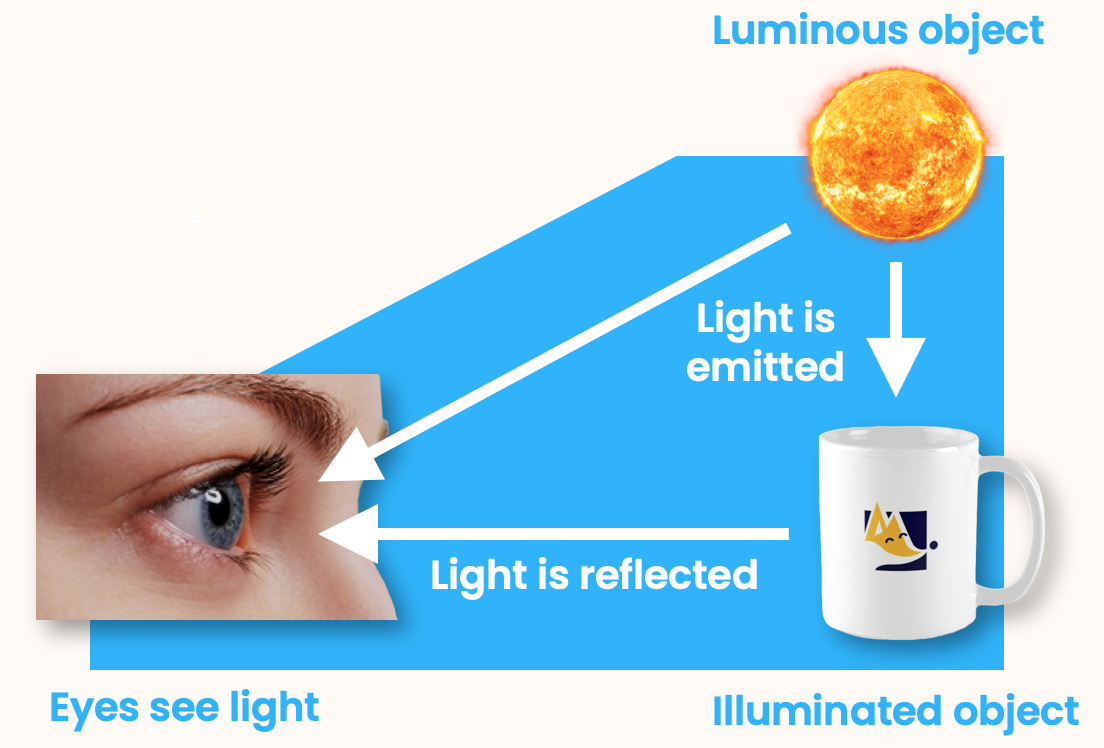
- Luminous objects emit light.
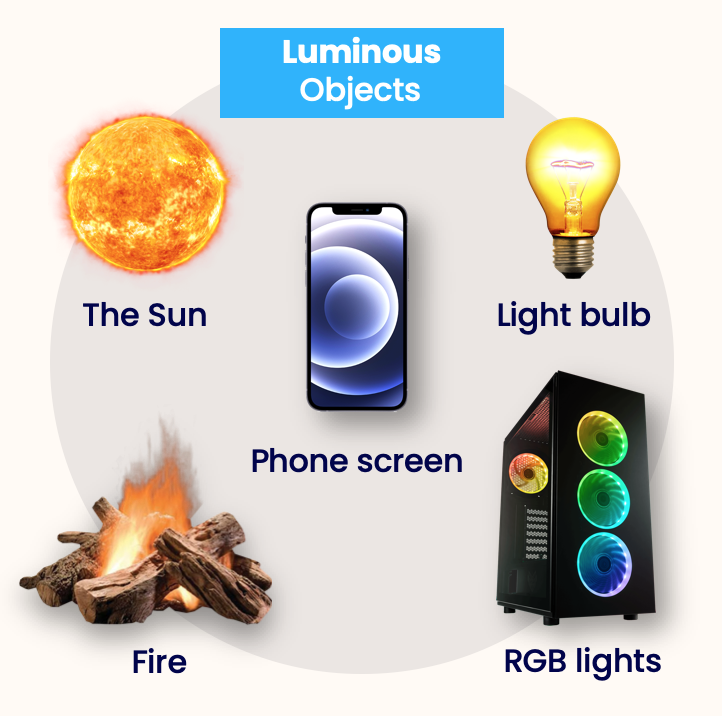
- Illuminated objects reflect light.
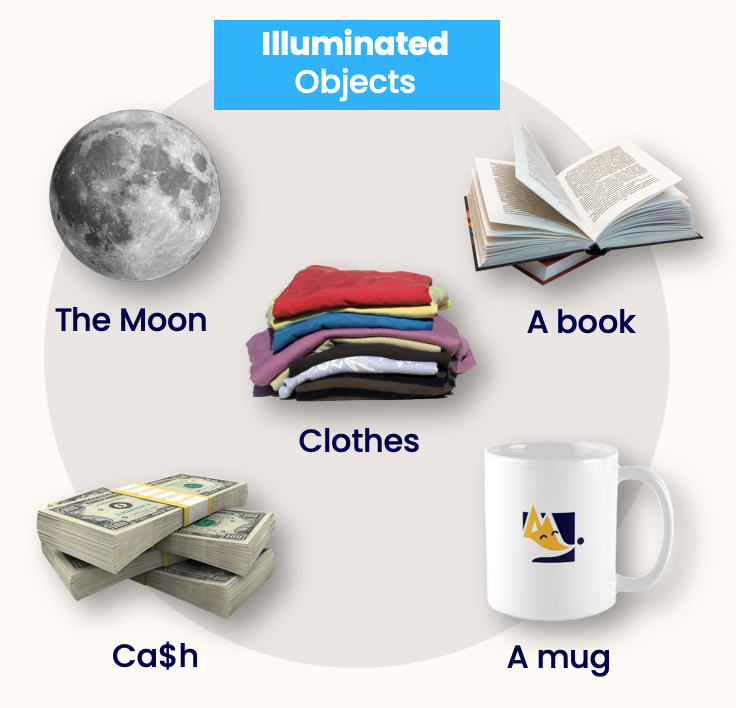
I'll look at the sun, and I'll look in the mirror
I'm on the right track, yeah I'm onto a winner
How do we see things? Does the eye have something coming out of it, that ‘feels out’ objects?

That doesn't make sense — otherwise we'd be able to see things equally well all of the time, day or night.

What makes more sense is that there is something that goes into our eyes. We'll call this thing light. The sun creates light, so when the sun is out we can we can see the light from it, as well as light from the sun that has bounced off other objects. (The scientific word for 'bounce' is reflect).
Light is created by some objects, and reflected from other objects. There's a special name we use for each of these types; luminous and illuminated.
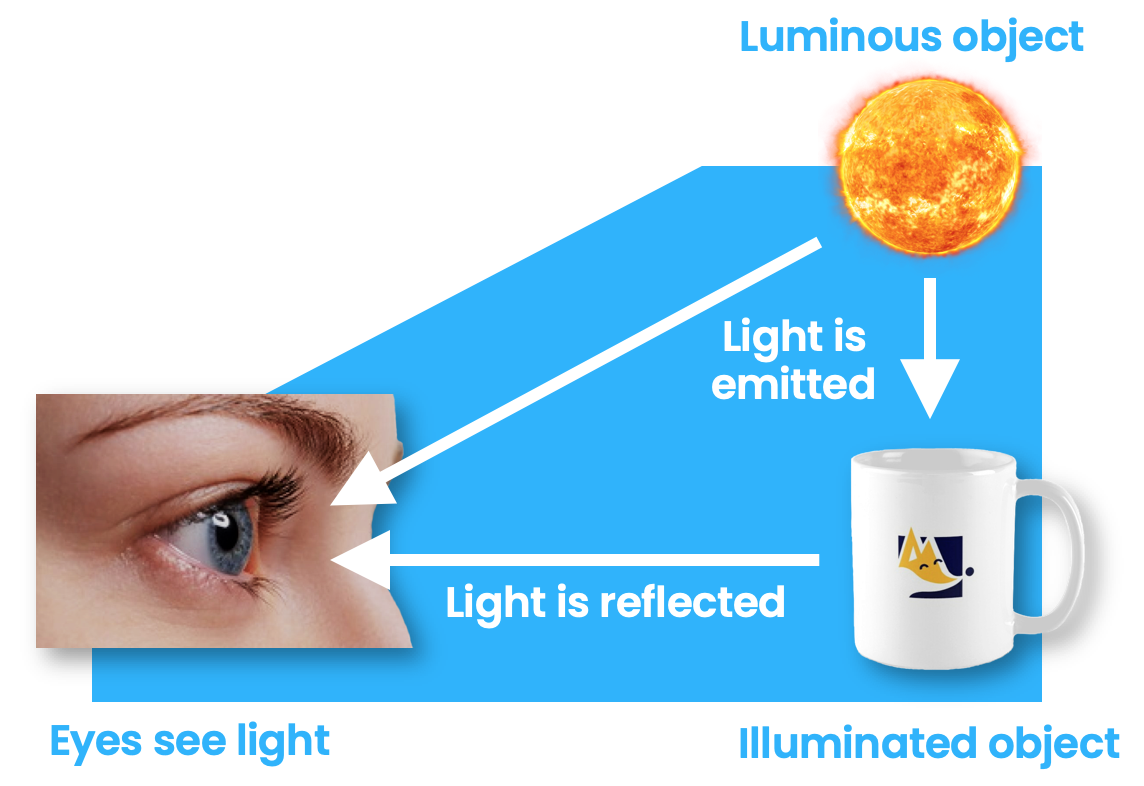
Luminous objects emit (aka. create) light.
Illuminated objects reflect light.
Here's a way to remember it: The spell lumos from Harry Potter makes a wand tip luminous.
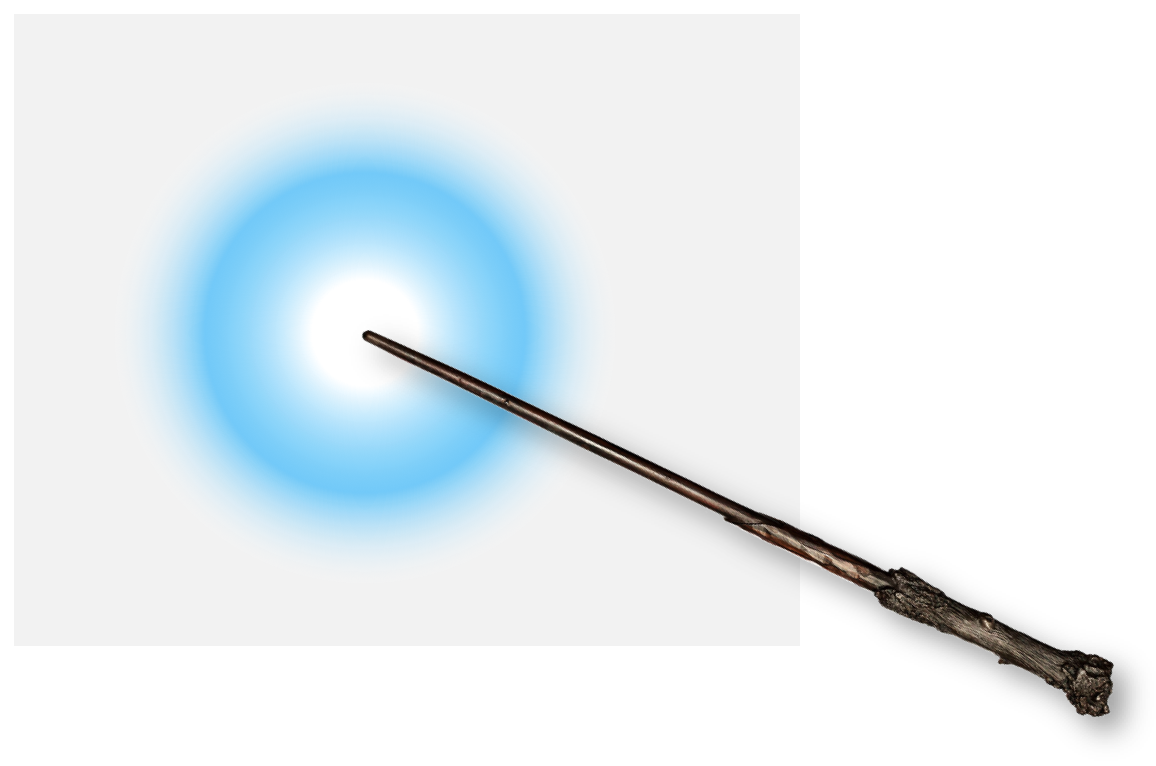
Here are some examples of luminous and illuminated objects:
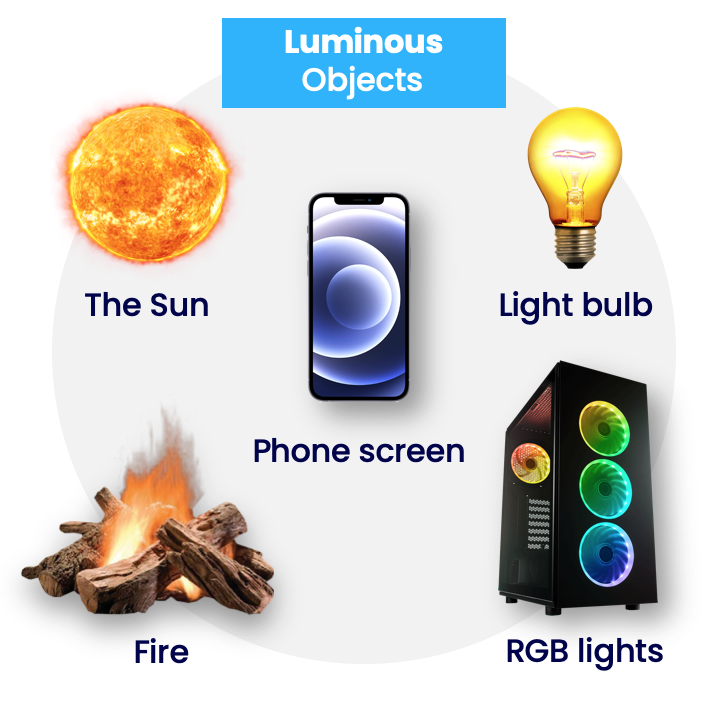

Let's summarise the journey light takes to our eyes (from any illuminated object):
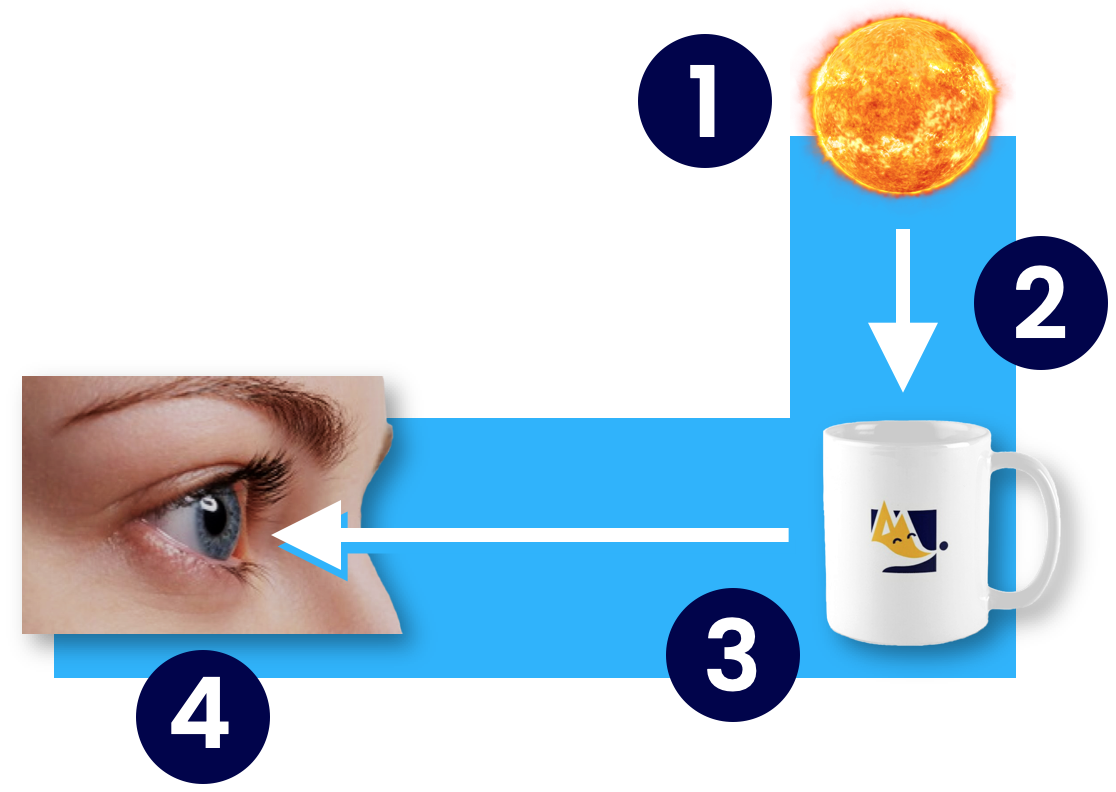
- Light is created by a luminous object
- Light travels through space
- Light is reflected off an illuminated object
- Light is detected by our eyes (after travelling through space again)
Over the next set of pages, we will understand what happens during steps 2-4. Step 1 is quite complex (and there are many ways it's done), so we'll cover that another time.

It's both!
Glow-in-the-dark objects are luminous because they always emit light, but it's such a small amount of light that you can only see it in dark room (hence the name: glow-in-the-dark).
In a bright room, a glow-in-the-dark object reflects light just like any other illuminated object would, so it is also illuminated.
Congratulations!
7 of 7 questions completed
+ ⭐️ collected.
Sign up (for free!) to:
• save your progress 📊
• create constellations✨
• customise your fox! 🦊







